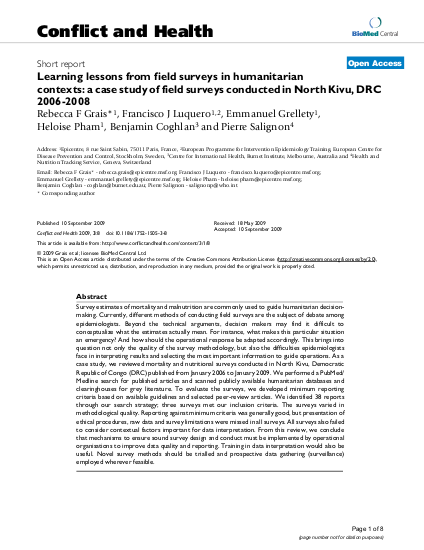
Survey estimates of mortality and malnutrition are commonly used to guide humanitarian decisionmaking. Currently, different methods of conducting field surveys are the subject of debate among epidemiologists. Beyond the technical arguments, decision makers may find it difficult to conceptualize what the estimates actually mean. For instance, what makes this particular situation an emergency? And how should the operational response be adapted accordingly. This brings into question not only the quality of the survey methodology, but also the difficulties epidemiologists face in interpreting results and selecting the most important information to guide operations. As a case study, we reviewed mortality and nutritional surveys conducted in North Kivu, Democratic Republic of Congo (DRC) published from January 2006 to January 2009. We performed a PubMed/ Medline search for published articles and scanned publicly available humanitarian databases and clearinghouses for grey literature. To evaluate the surveys, we developed minimum reporting criteria based on available guidelines and selected peer-review articles. We identified 38 reports through our search strategy; three surveys met our inclusion criteria. The surveys varied in methodological quality. Reporting against minimum criteria was generally good, but presentation of ethical procedures, raw data and survey limitations were missed in all surveys. All surveys also failed to consider contextual factors important for data interpretation. From this review, we conclude that mechanisms to ensure sound survey design and conduct must be implemented by operational organisations to improve data quality and reporting. Training in data interpretation would also be useful. Novel survey methods should be trialled and prospective data gathering (surveillance) employed wherever feasible.